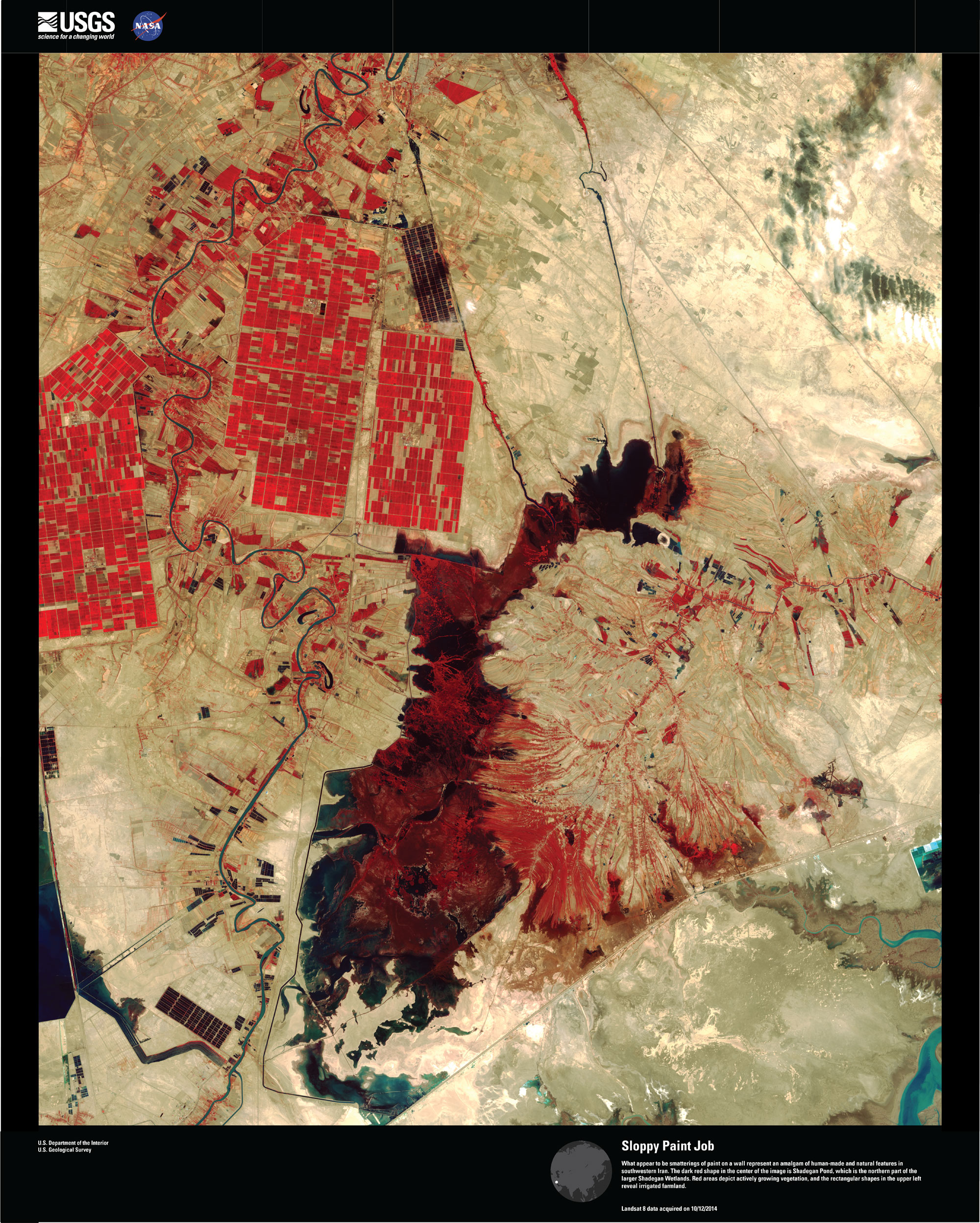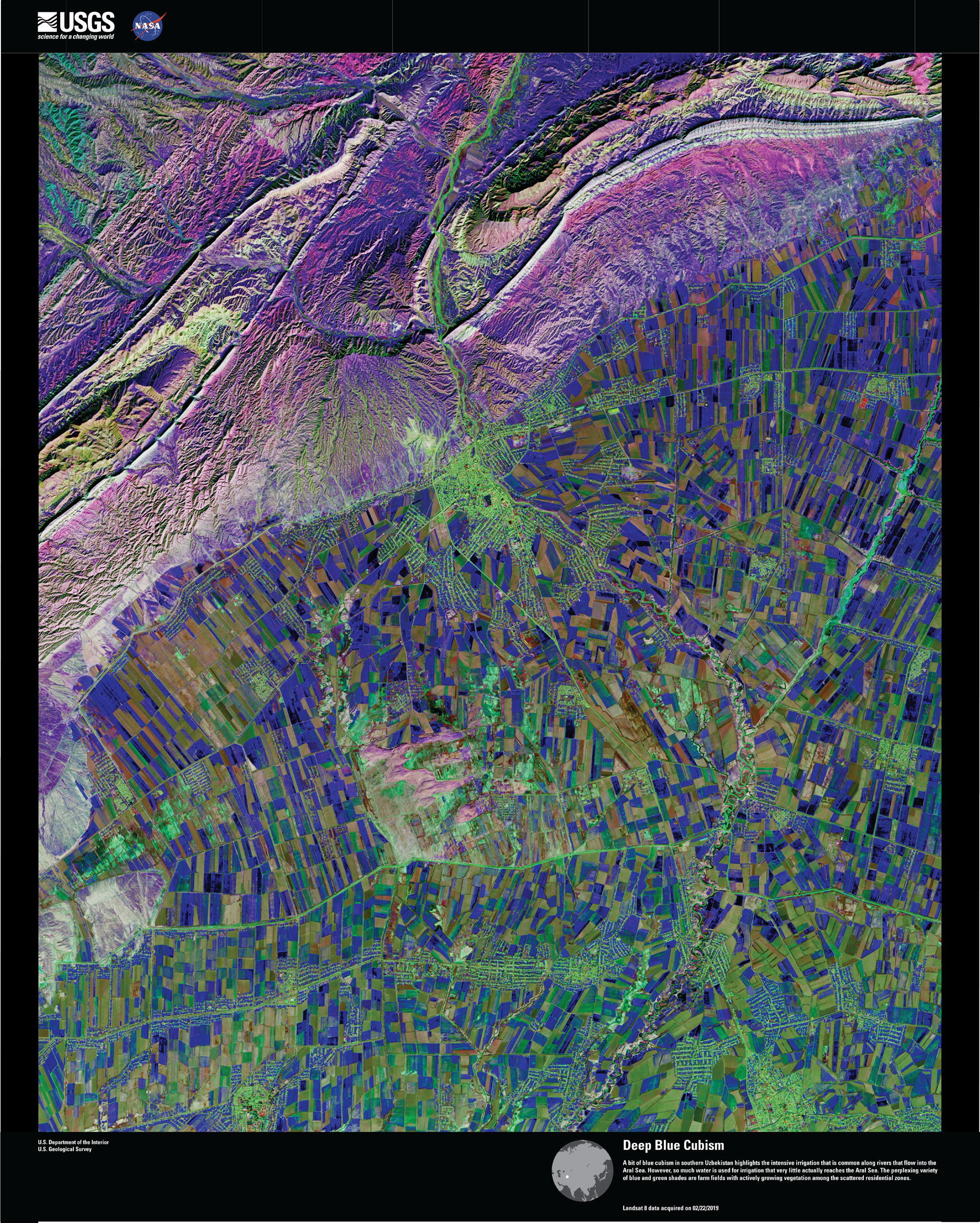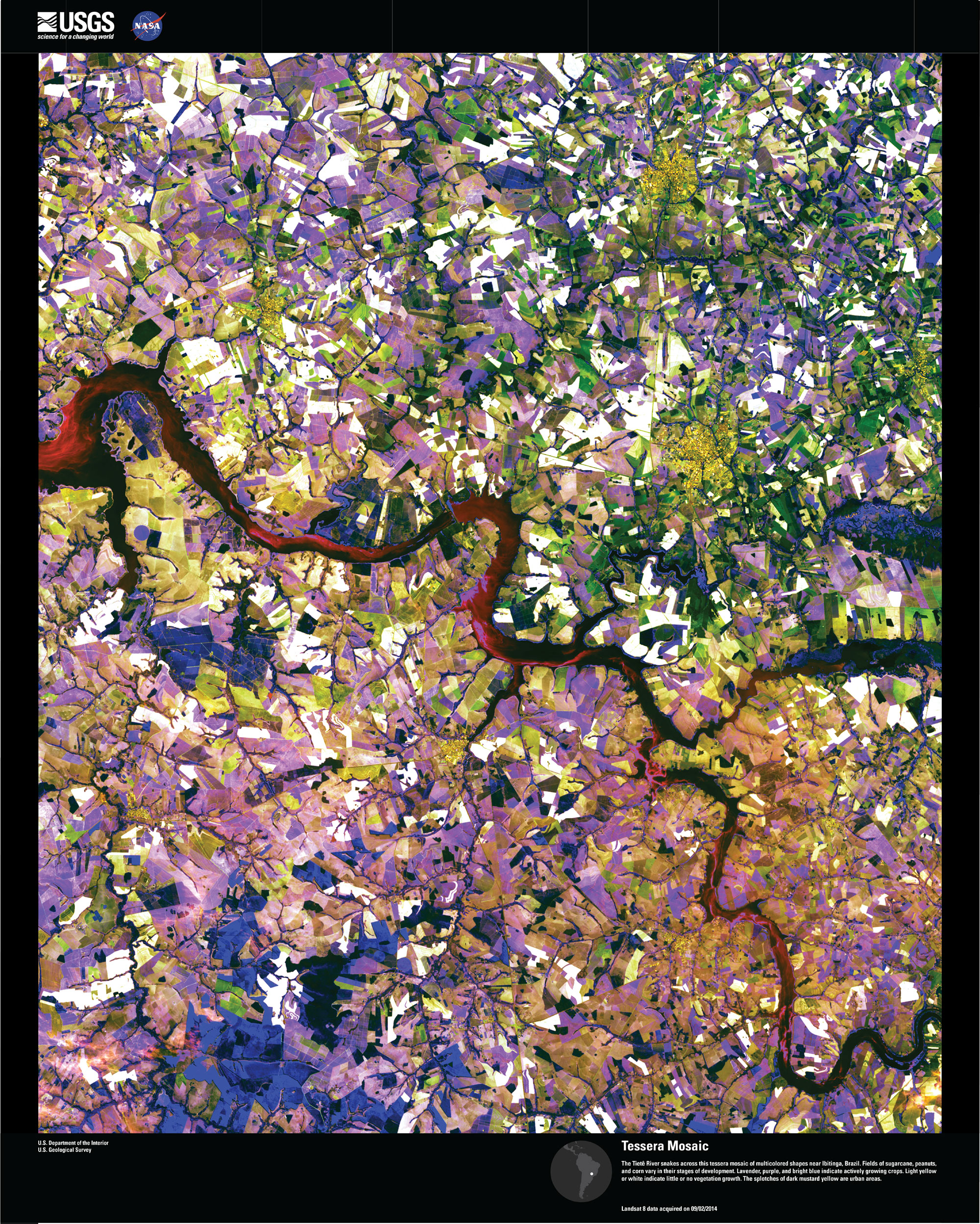In need of food, air and land, we humans have modified the face of Earth. The beauty still remains; only the colors have changed patterns. Agriculture, irrigation, urbanization, all have left an irreversible and irreparable footprint, giving rise to these checkered and geometric patterns on Earth.
What appears to be smatterings of paint on a wall represents an amalgam of human-made and natural features in southwestern Iran. The dark red shape in the center of the image is Shadegan Pond, which is the northern part of the larger Shadegan Wetlands. Red areas depict actively growing vegetation, and the rectangular shapes in the upper left reveal irrigated farmland.
Deep Blue Cubism – A bit of blue cubism in southern Uzbekistan highlights the intensive irrigation that is common along rivers that flow into the Aral Sea. However, so much water is used for irrigation that very little actually reaches the Aral Sea. The perplexing variety of blue and green shades are farm fields with actively growing vegetation among the scattered residential zones.
Tessera Mosaic – The Tietê River snakes across this tessera mosaic of multicolored shapes near Ibitinga, Brazil. Fields of sugarcane, peanuts, and corn vary in their stages of development. Lavender, purple, and bright blue indicate actively growing crops. Light yellow or white indicate little or no vegetation growth. The splotches of dark mustard yellow are urban areas.








